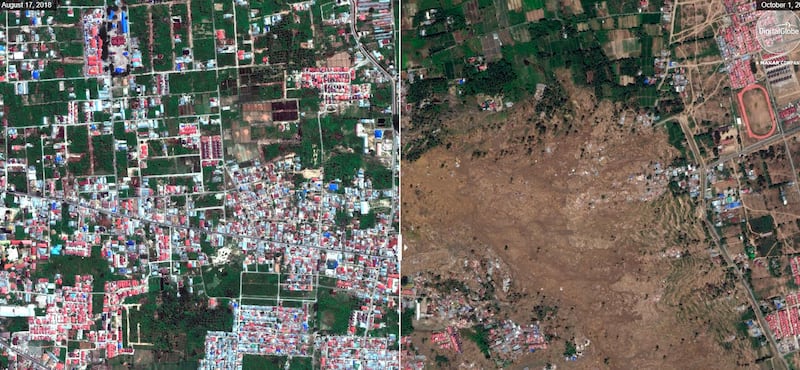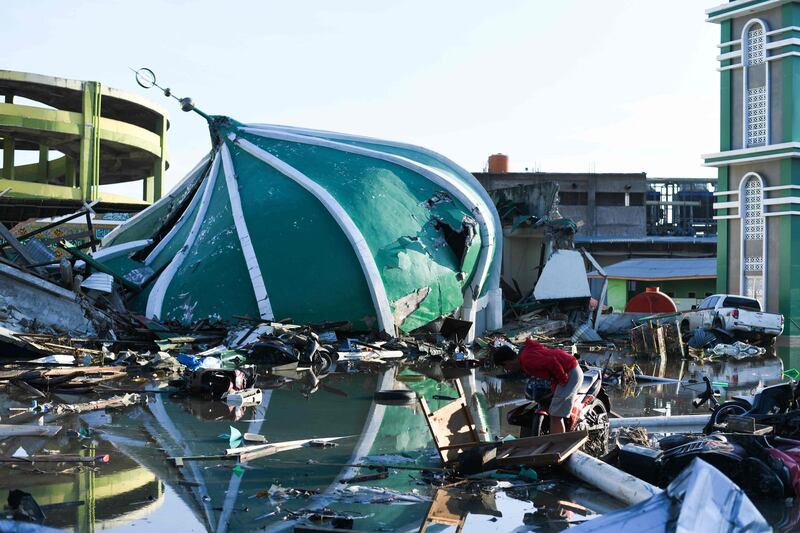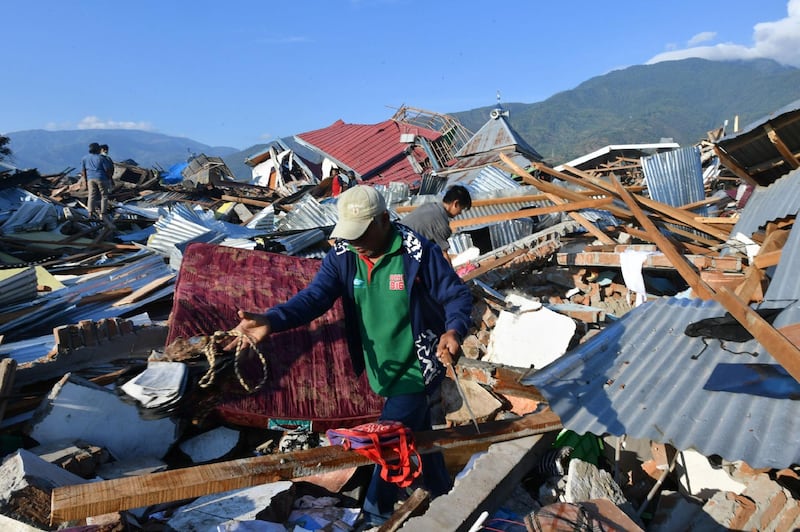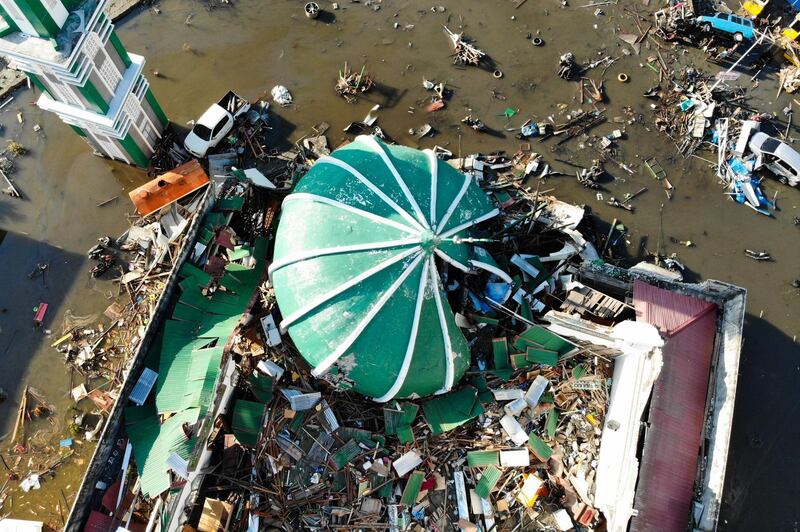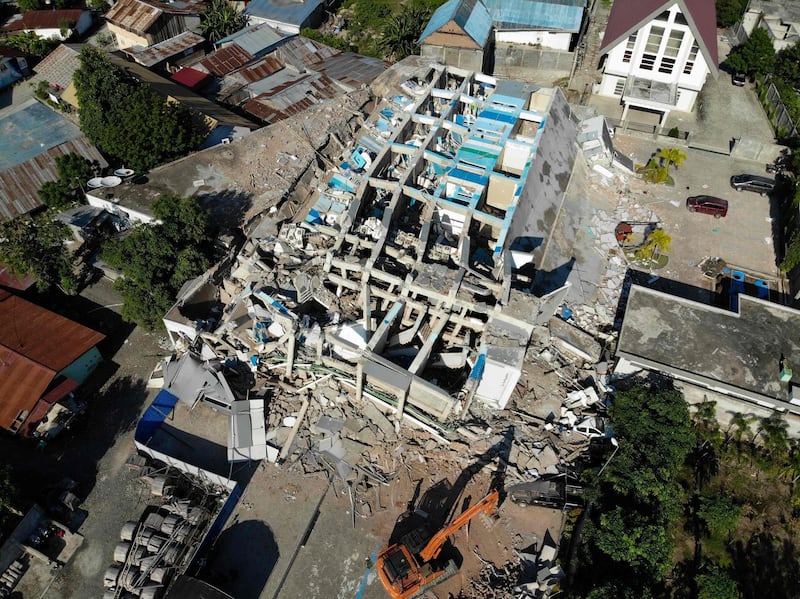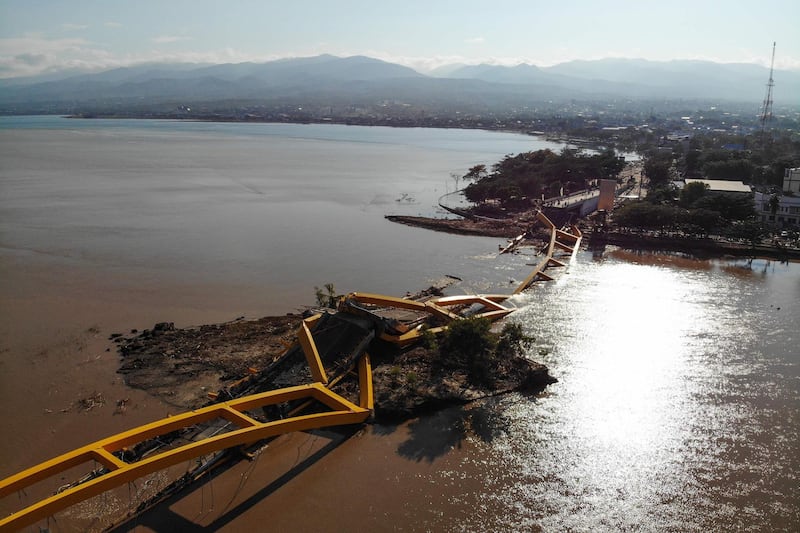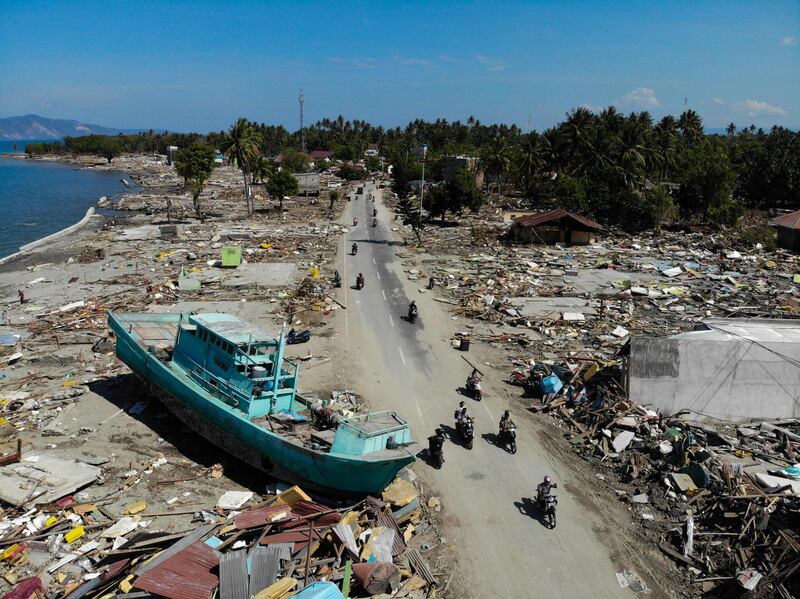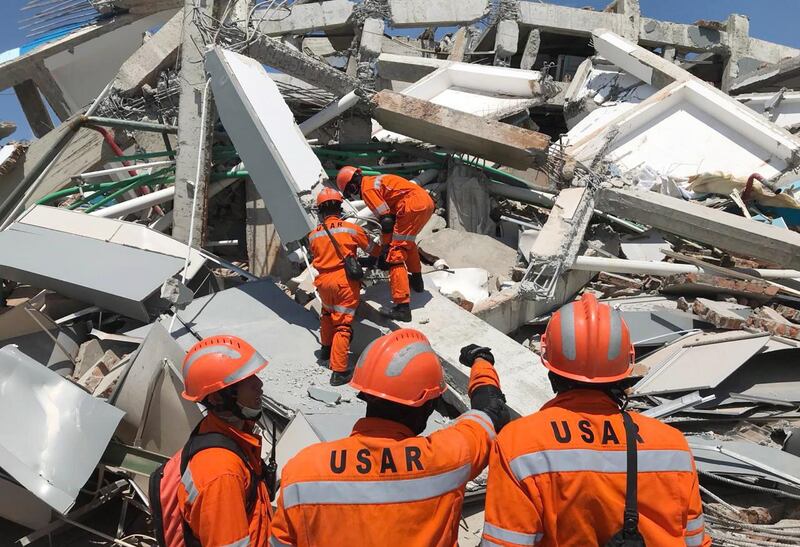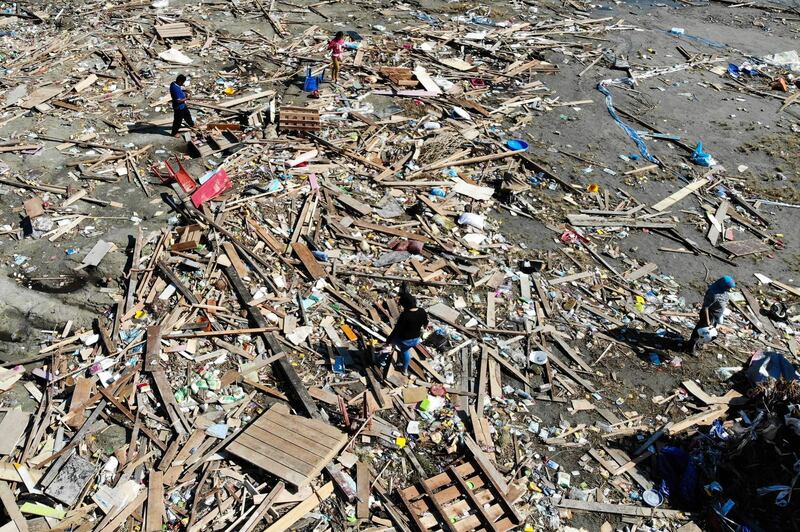Indonesian President Joko Widodo ordered more rescuers to be sent in to find victims of a devastating earthquake and tsunami on Tuesday as the official death toll rose above 1,200 and looting raised fears of growing lawlessness.
Most of the dead have been from the small city of Palu, 1,500 kilometres northeast of Jakarta, but some remote areas have been cut off since Friday's 7.5 magnitude earthquake triggered tsunami waves, leading to fears the toll could soar.
"There are some main priorities that we must tackle and the first is to evacuate, find and save victims who've not yet been found," Mr Widodo told a government meeting to coordinate disaster recovery efforts on the west coast of Sulawesi island.
He said he had ordered the national search and rescue agency to send more police and soldiers into the affected districts, some cut off by destroyed roads, landslides and downed bridges.
The official death toll surged to 1,234, the national disaster agency said.
The Red Cross said the situation was "nightmarish" and reports from its workers venturing into one cut-off area, Donggala, a region of 300,000 people north of Palu and close to the epicentre, indicated it had been hit "extremely hard".
Earthquake-tsunami devastation revealed in satellite photos
Four badly hit districts have a combined population of about 1.4 million.
In Palu, tsunami waves as high as six metres smashed into the beachfront, while hotels and shopping malls collapsed in ruins and some neighbourhoods were swallowed up by ground liquefaction.
Liquefaction, which happens when soil shaken by an earthquake behaves like a liquid. About 1,700 houses in one neighbourhood were swallowed up, with hundreds of people believed buried, the national disaster agency said.
Before-and-after satellite pictures show a largely built-up neighbourhood just south of Palu's airport seemingly wiped clean of all signs of life by liquefaction.
Petobo neighbourhood in Palu
>>>>
Balroa neighbourhood in Palu
>>>>
Palu Waterfront
>>>>>
Jembatan Empat Bridge
>>>>
Looting and fighting
Among those killed in the disaster were 34 children at a Christian bible study camp, a Red Cross official said.
The government has ordered aid supplies to be airlifted in but there's little sign of help on Palu's shattered streets and survivors appeared increasingly desperate.
A Reuters news team saw a shop cleared by about 100 people, shouting, scrambling and fighting each other for items including clothes, toiletries, blankets and water.
Many people grabbed diapers while one man clutched a rice cooker as he headed for the door. Non-essential goods were scattered on the floor amid shards of broken glass.
______________
Read more:
Indonesian man hailed as hero as quake-hit island starts burying dead in mass grave
Indonesia scrambles to help quake-hit island as death toll tops 800
Illusive tsunamis: The difficulty tracking mega waves
______________
At least 20 police were at the scene but did not intervene. The government has played down fears of looting saying disaster victims could take essential goods and shops would be compensated later.
Indonesia is all too familiar with earthquakes and tsunamis. A quake in 2004 triggered a tsunami across the Indian Ocean that killed 226,000 people in 13 countries, including more than 120,000 in Indonesia.
It has said it would accept offers of international aid, having shunned outside help earlier this year when an earthquake struck the island of Lombok.
Buried fast
Rescuers in Palu held out hope they could still save lives.
A man was pulled out alive from a destroyed building in Palu on Monday, after a three hour-effort by a search and rescue team.
Video from the National Search and Rescue Agency showed the 38-year-old man being rescued from the ruins of a financial building.
In the city, 1,700 buildings were destroyed, an entire neighbourhood was swallowed up and hundreds of people are believed to be buried underneath.
The rescue was a bright spot in an increasingly desperate situation.
"We suspect there are still some survivors trapped inside," the head of one rescue team, Agus Haryono, said at the collapsed seven-storey Hotel Roa Roa.
About 50 people were believed to have been caught inside the hotel when it was brought down. About nine bodies have been recovered from the ruins and three rescued alive.
Mr Haryono pored over the hotel's blueprints, searching for possible pockets and a way through to them. A faint smell of decomposition hung in the air and power has yet to be restored.
Elsewhere, on the outskirts of Palu, lorries brought 54 bodies to a mass grave dug in sandy soil.
Most of the bodies had not been claimed, a policeman said, but some relatives turned up to pay respects to loved ones at the 50-metre trench, where the smell of decomposition was overpowering.
"It's OK if he's buried in the mass grave, it's better to have him buried fast," said Rosmawati Binti Yahya, 52, whose husband was among those placed in the grave, before heading off to look for her missing daughter.
More than 65,000 homes were damaged and more than 60,000 people have been displaced and are in need of emergency help, while thousands have been streaming out of stricken areas.
Commercial airlines have struggled to restore operations at Palu's damaged airport but military aircraft have taken some survivors out.
But thousands of people have been thronging the airport hoping for any flight out, and authorities have said a navy vessel capable of taking 1,000 people at a time would be deployed to help with the evacuation.
Sulawesi is one of the archipelago nation's five main islands.
